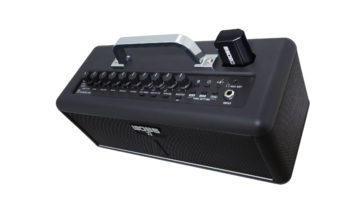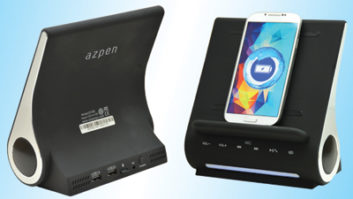TWICE:Did sales of tabletop docking speakers with docking pin connectors, and wireless-only tabletop speakers with Wi-Fi or Bluetooth, grow in 2012? What are the expectations in 2013?
Sumner: Docking speaker sales fell in 2012, and streaming speaker sales increased. We expect to see many more streaming speakers in the market in 2013 and fewer docking speakers. Consumers are clearly moving to wanting wireless everything, so the move to “no dock” is inevitable. Apple’s move to the Lightning connector may encourage that, but the main factor is consumer lifestyle, and we expect to see the strong trend toward streaming speakers continue.
Poggi: Docks are a great way to stream music from your digital sources, especially Apple devices, Androids and your computer. We see continued growth in the segment. Whenever there is confusion in the market with a new connector, it always creates confusion and a short-term pause. But we remain confident in this segment as customers seek to get music from their mobile devices to their homes and anywhere they may travel in an easy and great sounding way.
Kiczek: In 2012, the dock market grew as consumers carried their media on mobile products and looked to connect these devices with their home audio systems. Many consumers prefer to retain the flexibility to edit playlists on the fly, skip tracks, etc., without a physical connection, thus their preference for wireless connectivity. That’s why this year Samsung introduced its first wireless audio dock that includes both a physical dock and wireless compatibility with iOS and Android. In 2013, we expect that the market for docks with wireless connectivity will grow while the market for docks with only physical docking units will decline.
TWICE: What are the comparative niches for Bluetooth, AirPlay, and DLNA speakers?
Kiczek: Each technology has its benefits. Bluetooth has a shorter range (about 30 feet) but broader compatibility, whereas AirPlay and DLNA are Wi-Fi technologies that can be used anywhere within the connected network.
In addition, Bluetooth speakers can have weaker sound quality. However, Wi-Fi-based speakers such as AirPlay or DLNA speakers do not have any sacrifice on sound quality thanks to the wider band of Wi-Fi.
Also, Bluetooth speakers stream audio only while AirPlay or DLNA speakers can not only stream music but also access and browse music library on the PC.
TWICE:Will speakers that incorporate more than one connectivity technology gain share?
Kiczek: Consumers want choice. Docks and audio products with more than one connectivity option provide fewer limitations and enable future devices to connect as consumers may change technologies. By adding support for AllShare connectivity to Samsung audio products, we allow consumers to link their audio equipment with their Samsung TVs, tablets and mobile devices – but we also provide connectivity through Bluetooth if the consumer wants to connect a product that is not AllShare compatible.
TWICE:In docking speakers, what are the feature trends to expect in 2013?
Kiczek: As single-connectivity physical-docking products are in decline, consumers continue to want flexibility when playing their audio files. They look to multitask while playing music, and physically docking their devices impedes this. Consumers want to complete tasks as simple as skipping a song or changing a playlist without walking over to the dock. Wireless products will drive growth based on consumers who want more flexibility.
At the same time, we don’t want to exclude consumers who have legacy devices, so for this reason we’ll continue to lead the market with dual dock products that include both wireless and physical docks.












